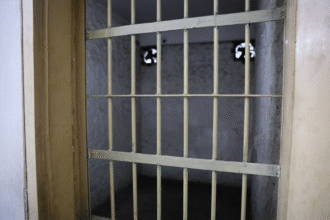The government aims to reduce migration while ensuring a sustainable future for higher education.
New Restrictions on International Student Numbers
Aiming to lower total migration to pre-pandemic levels, Australia will curb the number of new overseas students it welcomes. 2025, the new policy will cap the number of new international student enrolment to 270,000. This action is part of a more extensive campaign to guarantee the viability of the higher education industry and manage growing migration levels.
Every university will have a unique quota; the essential reduction will affect vocational education and training providers, who have witnessed a notable increase in overseas enrolment since the epidemic.
Industry Backlash and Economic Concerns
The policy has infuriated many working in tertiary education. Specific colleges have attacked the cap as “economic vandalism,” claiming it might seriously damage establishments depending on foreign student revenue. Critics contend that Australia’s migration and housing issues require a different solution than the cap offers.
The choice comes as Australia welcomes over 717,500 overseas students. The fourth-largest export business in the nation, international education helped boost the economy by A$36.4 billion in 2022–23.
Education Minister Defends the Policy
The Education Minister justified the cap by emphasizing that it seeks to guarantee long-term sustainability and help raise the quality of Australia’s educational system. He admitted that harsh border restrictions and sent-home international students seriously disrupted higher education during the epidemic. But he also noted that student enrollment has lately recovered.
“Students are back, but so are the shocks—people are trying to profit from this sector quickly,” he remarked. The government has accused certain educational institutions of unethical behavior, such as enrolling those who want to work instead of studying, allowing students to lack the required language abilities, or providing inferior instruction.
“These reforms are meant to make it better and fairer, and set it up on a more sustainable footing going forward,” he said.
Managing Housing Pressures and Migration
Apart from raising educational standards, the limitations aim to solve Australia’s record migration rates, straining infrastructure and the housing market. The government has previously tightened minimum English-language criteria for overseas students and underlined more scrutiny of those seeking a second study visa. Furthermore, hundreds of evil teachers have been punished.
While maintaining educational quality, the restriction on overseas student counts is projected to relieve demand for infrastructure and housing. Reflecting 2023 levels, public university enrolments in 2025 will be dropped to 145,000. Private universities and non-university higher education providers will be limited to 30,000 new enrolments, while vocational education and training institutes will have a limitation of 95,000.
Incentives and Further Criticism
The strategy incentivizes colleges to provide new residences for international students to relieve strain on the housing market. Notwithstanding these programmes, many in the higher education industry nevertheless worry about the possible effects of the cap.
Opponents contend that the sector unfairly bears responsibility for more general migration and housing problems. Sydney University cautioned that the suggested changes might cost the economy $4.1 billion and cause around 22,000 job losses by 2025. The company’s top executive standing for esteemed colleges called the proposed legislation “draconian” and “interventionist.”
Reflecting the worries of many university leaders who feel the quota will jeopardize a sector essential to Australia’s economic health, she added, “This is nothing less than economic vandalism.”
Government Response
Notwithstanding the criticism, the administration stayed in its position. Although the cap will cause some service providers to make tough financial decisions, it denied assertions that the revisions would destroy the global education sector.
“To create the impression that this is somehow tearing down international education is absolutely and fundamentally wrong,” the Education Minister said, stressing once more the government’s dedication to guaranteeing the sustainability and quality of Australia’s education sector while addressing migration and infrastructure issues.
As the policy’s total influence on higher education and the economy becomes more evident, the argument over the cap on international student numbers is anticipated to persist.








